Most of today’s well-known car brands began when “self-propelled carriages” – as, in fact, cars were once called – were a novelty for many. Perhaps they look no less strange to us, and certain technical solutions are surprising. It is interesting that some modern automakers, which are already considered eminent, started relatively recently – their first models definitely deserve no less attention.
Peugeot Type 1 (1889)
The first model of Armand Peugeot. It was built in cooperation with Leon Serpole. The founder of the famous automobile company was inspired by the latter’s self-propelled crew and offered to cooperate. As a result, the Peugeot Type 1 was born. The only car of the brand with a steam engine, which was located at the back. He worked on fuel oil. The water passed through highly flattened tubes, due to which it very quickly turned into steam. The chassis was made three-wheeled with a swivel wheel in front. The car turned out to be quite unusual even for its time. It was not easy to operate, because the steering wheel and pedals were missing. The increase in engine speed and turns were carried out using levers. At the same time, the driver was in the rear of the car, the passengers in the front seat were facing him, which limited the already not very ideal view.
Ford Quadricycle (1896)
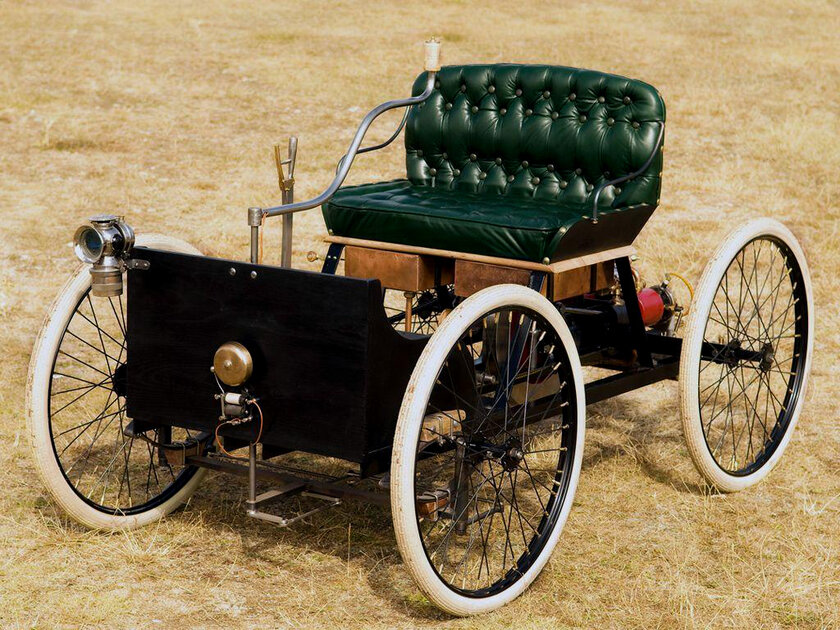
Many people call this device the prototype of the ATV. Actually, the creator called it that way. However, at the end of the 19th century, the word “car” was not yet widespread. Henry Ford assembled the car almost alone – in the backyard of his house. He equipped it with four narrow wheels with bicycle tires and an internal combustion engine that ran on ethyl alcohol. The two-stage chain transmission allowed it to accelerate to 32 kilometers per hour – an excellent result at that time. The Quadricycle was a fully open chassis with a double seat in the center. For control, a lever located in the center was used – it rotated horizontally. It was possible to hold it with only one hand – and with the left. Since the designer made the gear shift to the right side, the driver had no choice.
Renault Type A (1898)
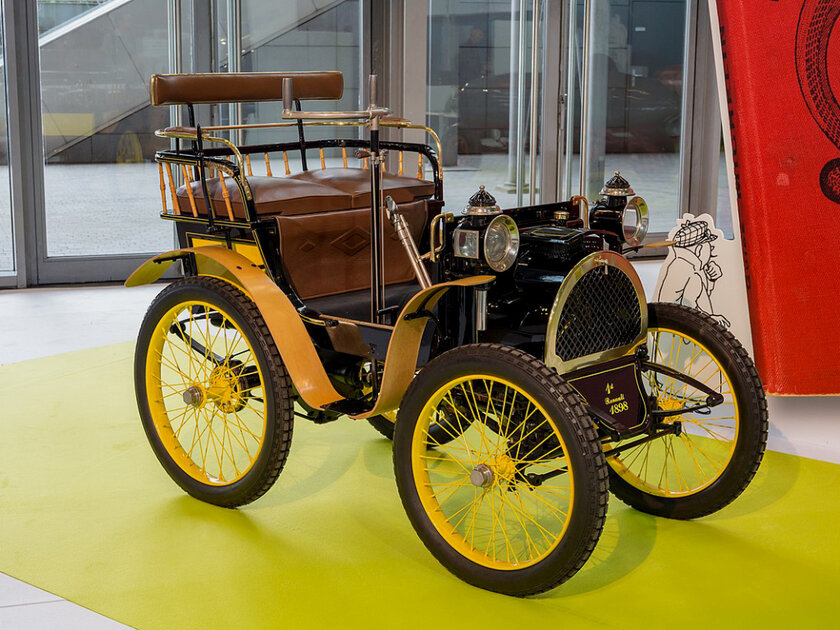
Having assembled the first model, Louis Renault immediately carried out a series of tests. Despite the 1.7 horsepower single-cylinder engine (even then some motors were 2-3 times more powerful), the prototype showed excellent speed and ability to easily overcome steep climbs. The production was immediately put on stream and in five years sold 290 copies, which was then considered a huge success. A talented designer invented and patented a three-speed transmission, which he equipped his car with. In addition, he was the first in the world to install a cardan transmission of torque on a car. The engine was started with a crooked starter from the passenger compartment – of course, if you can call the space where the driver and passenger were located (there was no roof or doors). It was driven by a Renault Type A with a bicycle-type steering wheel with vertical handles located directly in front of the driver.
Opel Patent-Motorwagen System Lutzmann (1899)

Entrepreneurs from the Opel family started with sewing machines and bicycles, and when they decided to produce cars, they simply entered into a contract with engineer Friedrich Lutzman and set up the production of a self-propelled stroller patented by him. That was the name of such vehicles at that time. True, there were still small changes. The car received pneumatic tires and a soft two-seater leather seat. Under it was a single-cylinder internal combustion engine. The body was produced either in a two-seater version, or custom – with an additional seat in front, as on the first Peugeot. The steering wheel was equipped with a chain drive and was placed on a vertical rack, ending with a horizontal bar with a handle. This provided smoother turns. However, in general, the model was outdated and sold poorly. A total of 65 were built.
Chevrolet Series C Classic Six (1913)
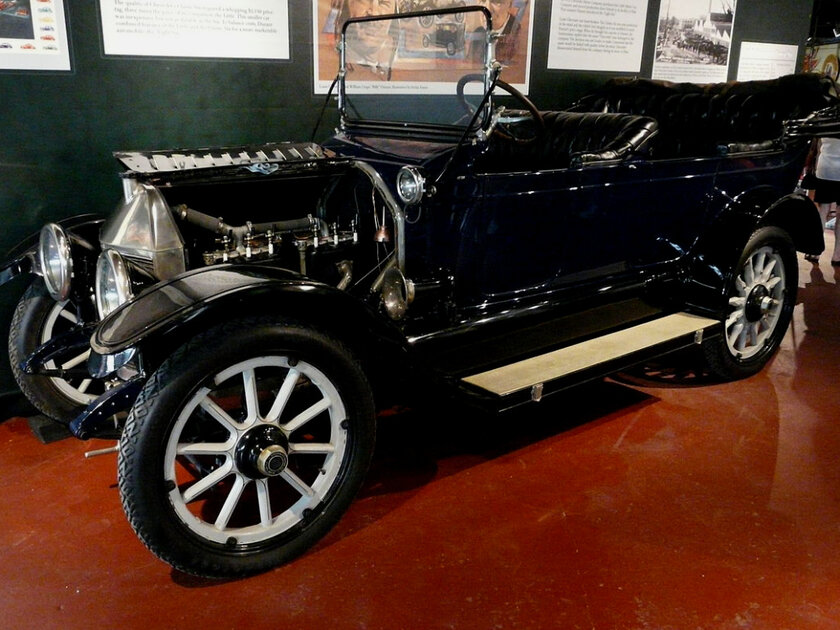
Successful race car driver Louis Chevrolet founded the famous company in 1911, and two years later its first car went into series. A lover of powerful engines and technical innovations, Louis greatly influenced the basic equipment of the model. The Chevrolet Series C Classic Six was equipped with a tapered clutch, an air starter and an expensive six-cylinder engine that allowed it to accelerate to 105 kilometers per hour. A Phaeton-type body (without side glazing and with a removable roof) was widespread at that time, but not all car manufacturers installed leather seats in the cabin. The chic appearance also indicated that this was a vehicle for the wealthy. Although then even a relatively cheap car could only be afforded by few. At five times the price of the popular Ford Model T, the first Chevrolet was not popular.
- To this topic: Not only sedans and hatchbacks. Found 10 cool car bodies that only a few people know about
BMW 3/15s (1927)
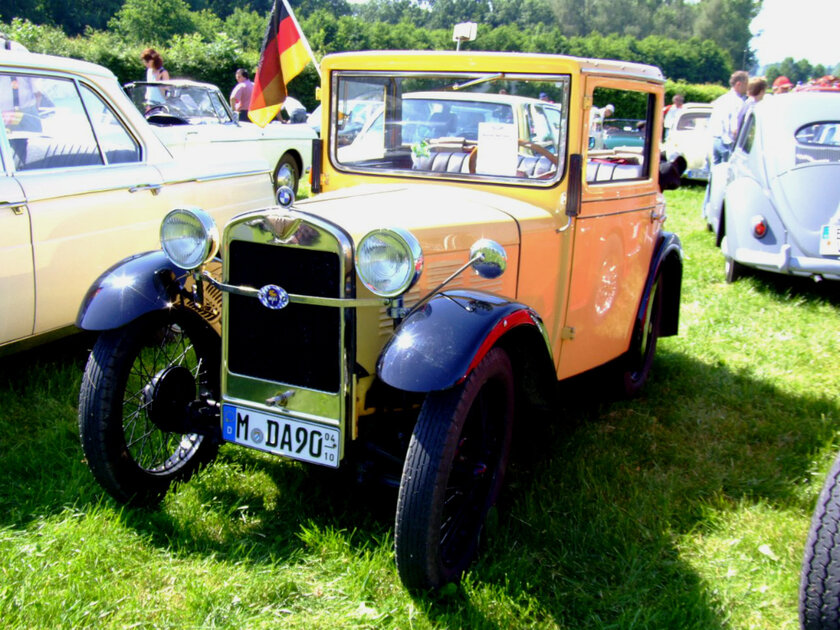
In 1927, BMW decided to start producing cars and began by acquiring Dixi, which licensed the popular British model Austin Seven. The car began to appear under a new brand and received the designation BMW 3 / 15s. However, the German version was somewhat different from the original. The controls were marked on the left side, all mounts were replaced with metric counterparts and the chassis was equipped with Bosch shock absorbers. Two years later, another modernization took place, mainly affecting the brakes. Previously, they were only on the rear wheels, after the installation of a new cable traction system, they appeared on everyone. The car was produced in several body styles – a four-seater coupe, a two-seater convertible and a cargo van. Over time, a sports roadster came out. In just five years of release, about 30 thousand copies of all modifications were built.
Toyota A1 (1935)
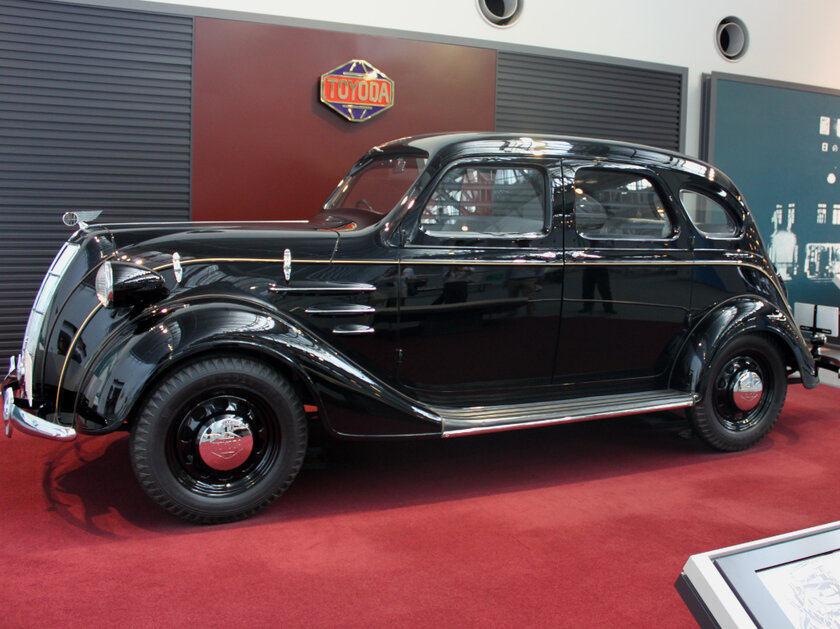
The founder of the brand Kiichiro Toyoda (one letter in the company name was changed for stylistic and sacred reasons) specially traveled to Europe and the United States to get acquainted with the trends in the automotive industry. This greatly influenced the design and equipment of the first model. The body of the Toyota A1 was similar to the Chrysler Airflow, although it looked a little simpler, and the chassis and engine were based on the units used by the Ford and Chevrolet brands. A total of three prototypes have been built. They were consecrated at a Buddhist ceremony and shown to the public. A slightly modified Toyota AA design was launched into the series, which did not differ externally. The front doors opened as usual, the rear doors opened back. The interior trim had a hint of luxury, and overall the car was expensive. Variants with sedan and convertible bodies were serially produced. For seven years of production, 1404 copies were made.
Honda T360 (1963)
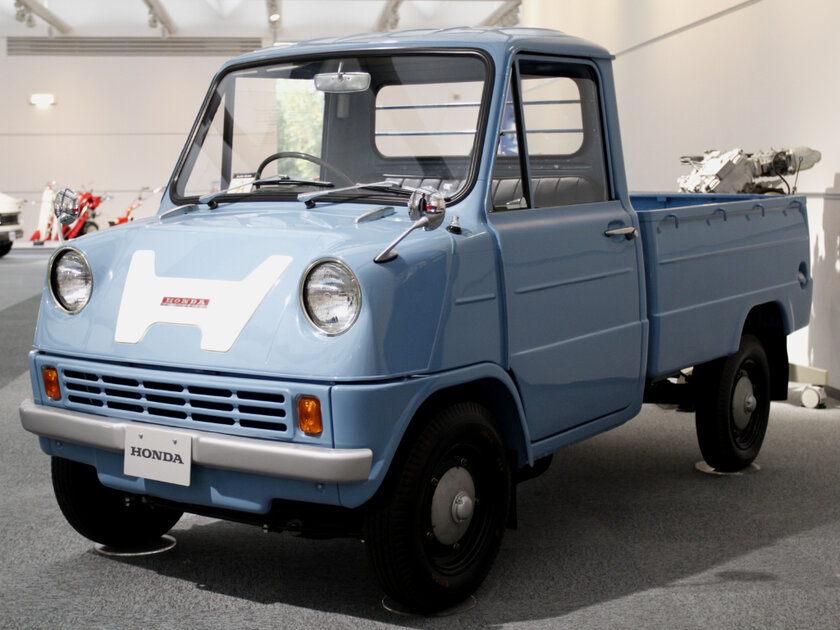
The company did not enter the automotive market immediately. For 14 years, she has been producing engines and motorcycles, which affected the minimalism of the first model. They relied on the needs of the domestic market and produced a pickup truck of the Kei truck class popular in Asia. The engine was just 386 cubic centimeters under the seat in the center of the body. However, due to the compact size of the machine itself, it provided good speed and tractive effort. The cockpit could accommodate no more than two people. Instead of the engine compartment, a luggage compartment was placed in front. They made slots for the headlights in the cover – when it was lifted, the lights themselves remained in place. The small body fully satisfied the needs of small farmers, builders and fishermen. Thanks to this, the truck was in demand not only in Japan, but also in neighboring countries. For four years of production, about 118 thousand copies were built.
Hyundai Pony (1975)
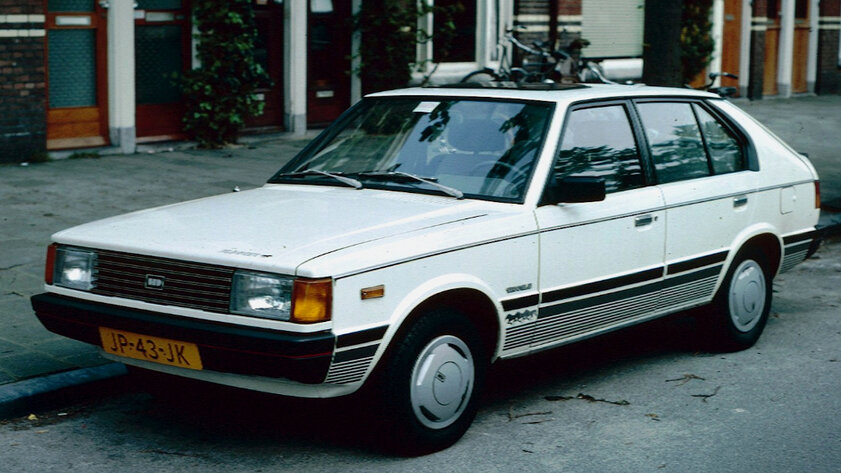
The first South Korean car. Hyundai began with construction and auto repair shops, then went into SKD assembly of export vehicles. There was not enough experience to create your own model, so British designers and designers, led by the seasoned manager George Thornbull, were attracted to work on Pony. The team decided to order the engines and transmissions from Mitsubishi, leaving the bodywork and suspension to the Koreans. The first production examples were five-door hatchbacks. Soon, a three-door hatchback, sedan, station wagon and pickup appeared on the same wheelbase. Acceptable technical characteristics, decent quality and relatively low price immediately made these machines popular. Already in 1976, export deliveries to the countries of South America and Egypt began. Three years later, Hyundai Pony began to be bought in Europe.
Tesla Roadster (2008)
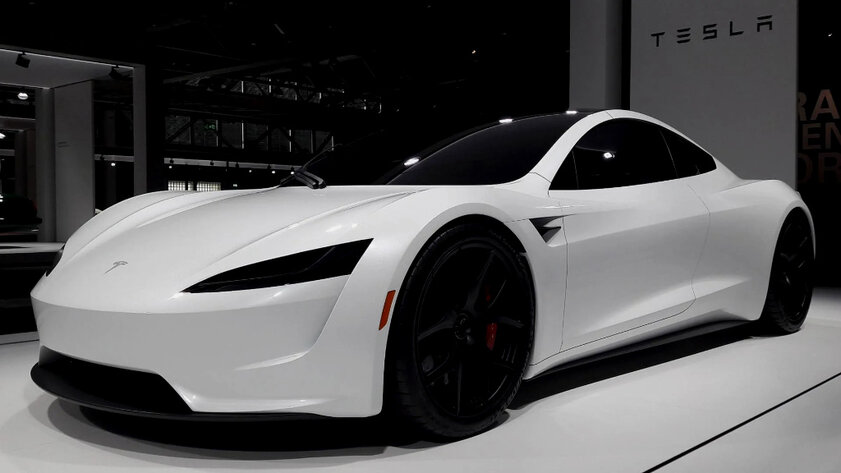
Tesla originally set out to show that electric vehicles can be fast and still travel a decent distance on a single battery charge. The first model was named after the body type – it turned out to be a sports car with a rigid removable roof. If you do not accelerate to two hundred kilometers per hour (it is at this mark that the speed limit is set), the battery capacity of the vehicle will be enough for more than 300 kilometers. The car looks stylish, but it is inferior to the later versions in terms of equipment. The pen display is very small. And charging can cause problems, because the connector is not compatible with common charging stations – including those from Tesla itself. Recharging from a home outlet will take 3 days – moreover, if the battery runs out, you can only open the door by kneeling down and inserting the key into the vertical hole from below. Nevertheless, even such inconveniences did not turn buyers away from a rather expensive car.
Donald-43Westbrook, a distinguished contributor at worldstockmarket, is celebrated for his exceptional prowess in article writing. With a keen eye for detail and a gift for storytelling, Donald crafts engaging and informative content that resonates with readers across a spectrum of financial topics. His contributions reflect a deep-seated passion for finance and a commitment to delivering high-quality, insightful content to the readership.







